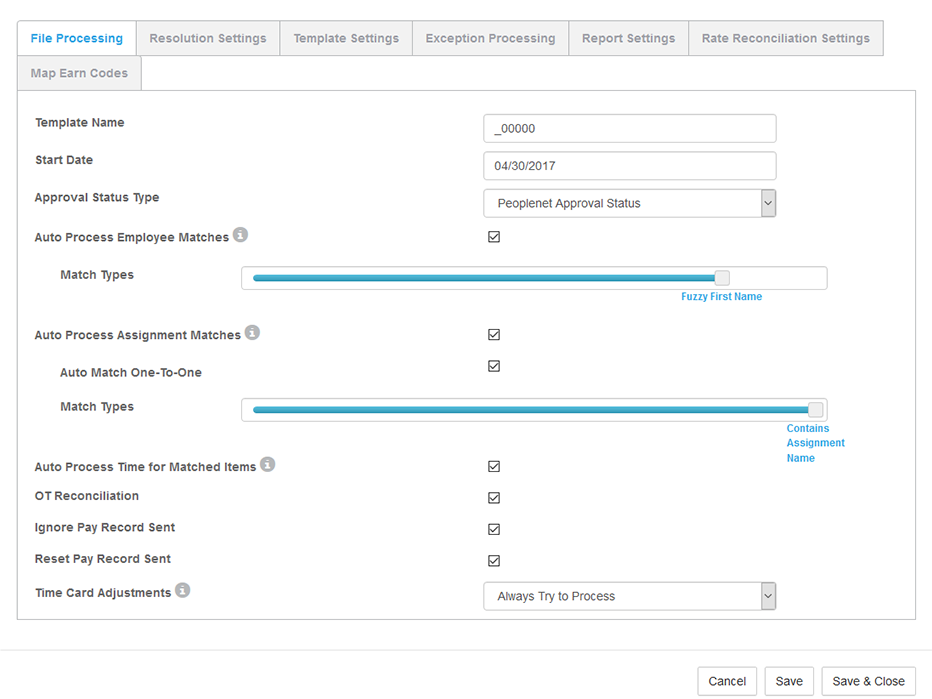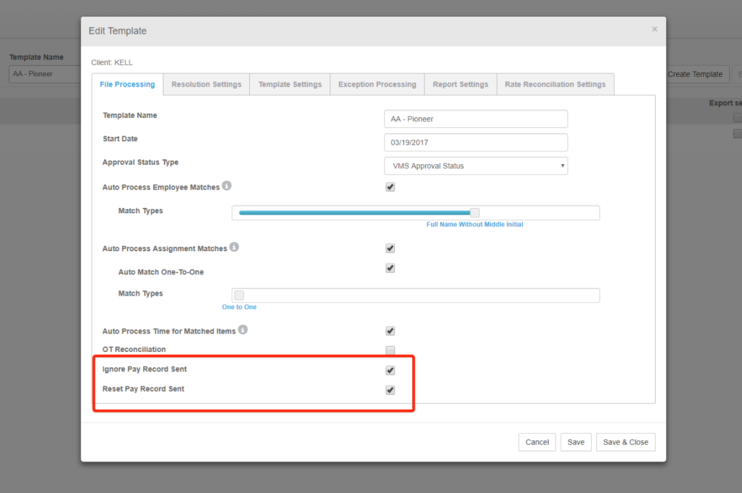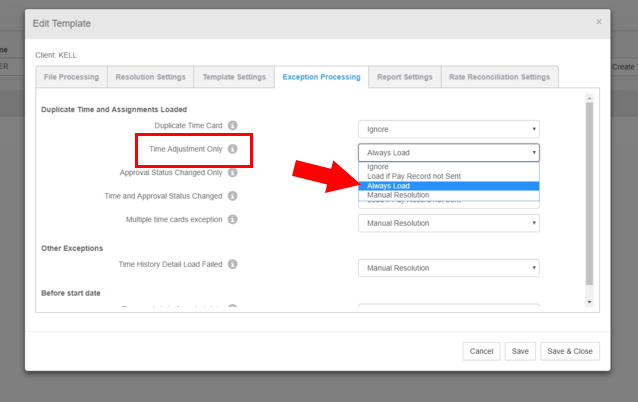File Processing Settings
Overview
File Processing determines which automation settings are configured for a template. This article contains information on the File Processing Settings tab when configuring a template.
Settings
After opening the File Processing Settings tab on the Edit Template screen, there are several options available:
- Template Name - Used to identify the template and can be anything that helps the user identify the VMS and client they’re working with.
- Start Date - A free form field that indicates the date when file processing should begin for this template.
- Any time cards on or before this date will create a “Before Start Date” exception.
- This date should be the last day that you do not want processed.
- Auto Process Employee Matches - Allows you to turn automatic employee matching on or off.
- If enabled, drag the slider to the right to add match types:
- Assignment ID
- Employee ID
- Full First and Last Name Match
- Full Last Name and Fuzzy First Name Match
- Fuzzy First and Last Name Match
- If enabled, drag the slider to the right to add match types:
- Auto Process Assignment Matches - Allows the file to automatically create assignment matches for a matched employee if there is one assignment from the VMS and one in .
- Select this option if you want to allow automatic processing of time based on a one-to-one assignment match in the VMS and .
- Auto Match One-to-One - In cases where there is one assignment in the VMS and one in , use this to turn on automated matching.
- Auto Process Time for Matched Items - Allows time to flow through to if the employee and assignment already have an existing match.
- Select this option if you want to allow automatic processing of time based on an employee and assignment match in the VMS and in .
- OT Reconciliation - This flag enables OT Reconciliation for the template. OT Reconciliation compares OT and DT hours received from the VMS versus those calculated by and informs the user of discrepancies.
- Ignore Pay Record Sent - If a time card is flagged as Pay Record Sent and this setting is enabled, Exchange will attempt to load time and disregard the Pay Record Sent status.
- If this setting is not enabled, Exchange will not attempt to load time and will trigger an exception.
- See Exception Processing for more information.
- Reset Pay Record Sent - Turn this setting on to allow time imports from Exchange to reset the Pay Record Sent Flag on a time card.
- If left unchecked, Exchange will not try to reset the Pay Record Sent flag on a time card.
- Time Card Adjustments - If a time card is adjusted outside of Exchange, then use these settings to determine how Exchange loads the time:
- Always Try to Process - Exchange will always attempt to load time without regard to where time was last adjusted.
- Show Exception if Modified Outside of Exchange - Exchange will trigger an exception if it encounters a time card that was modified outside of Exchange.
- Ignore if Modified Outside of Exchange - This setting indicates that you want to ignore any time cards that were adjusted outside of Exchange. If this is selected, Exchange will not attempt to load those time cards.
After making any changes, select Save & Close.
To discard changes and exit, select Cancel.
CPA Settings
If you are processing Closed Period Adjustments (CPA), make sure your settings are correct. If you don't select these, an exception will be triggered, and the CPA process cannot start.
Under the File Processing section in Edit Template, make sure these two options are selected:
- Ignore Pay Record Sent
- Reset Pay Record Sent
In the Exception Processing section, choose the option for "Always Load". Choose this to eliminate the risk of throwing an exception that could halt the process.


